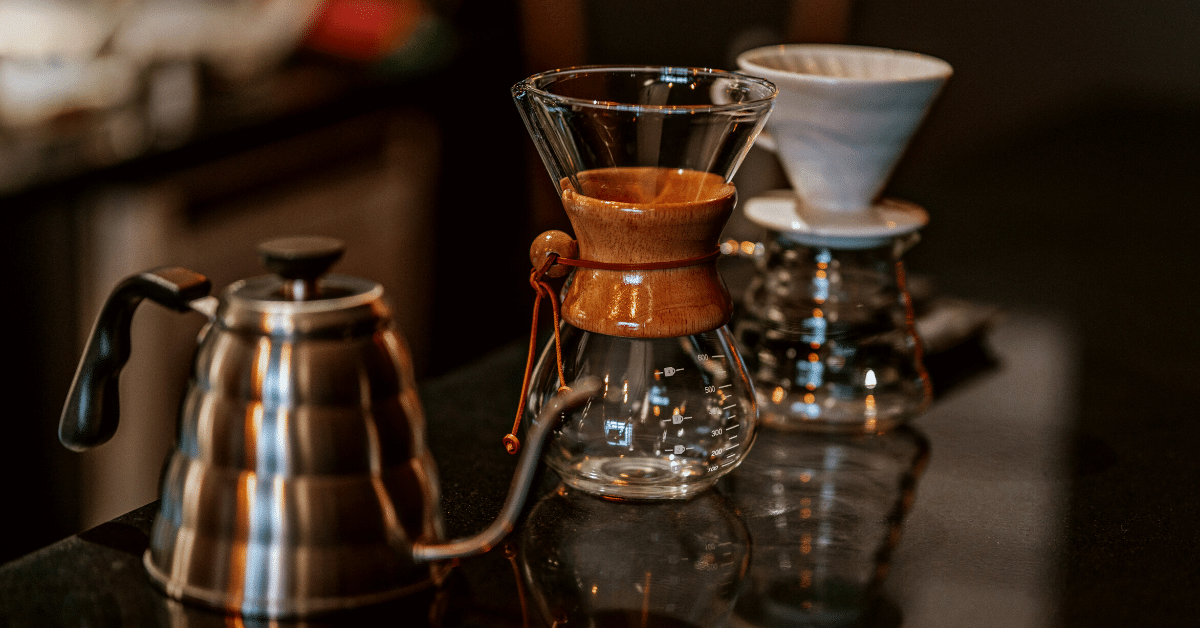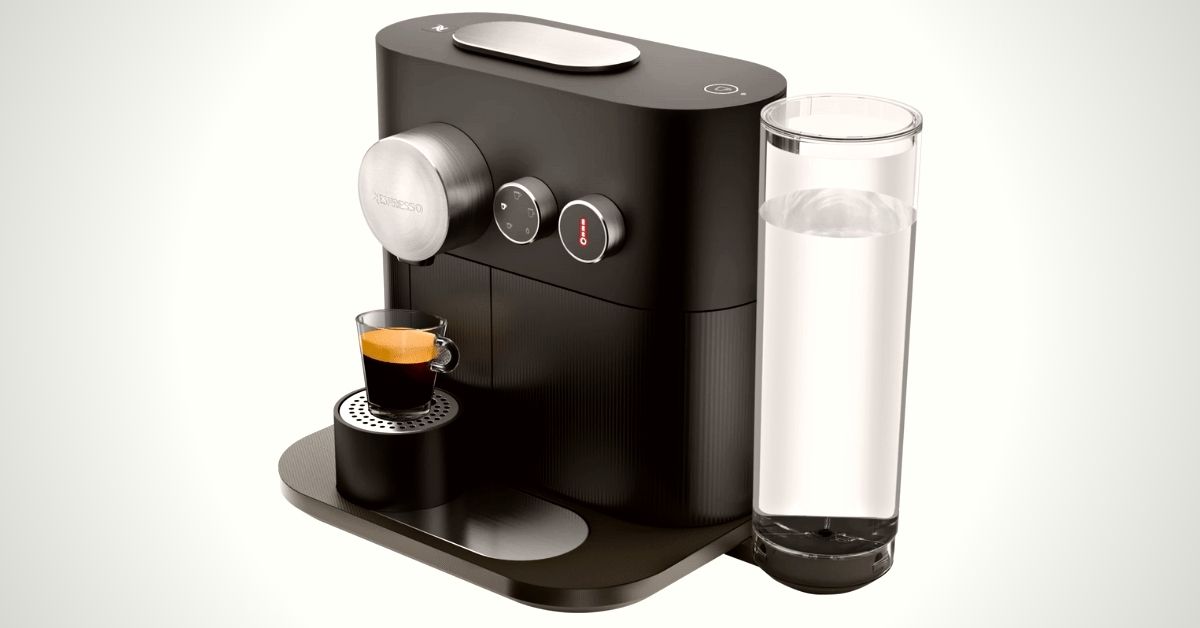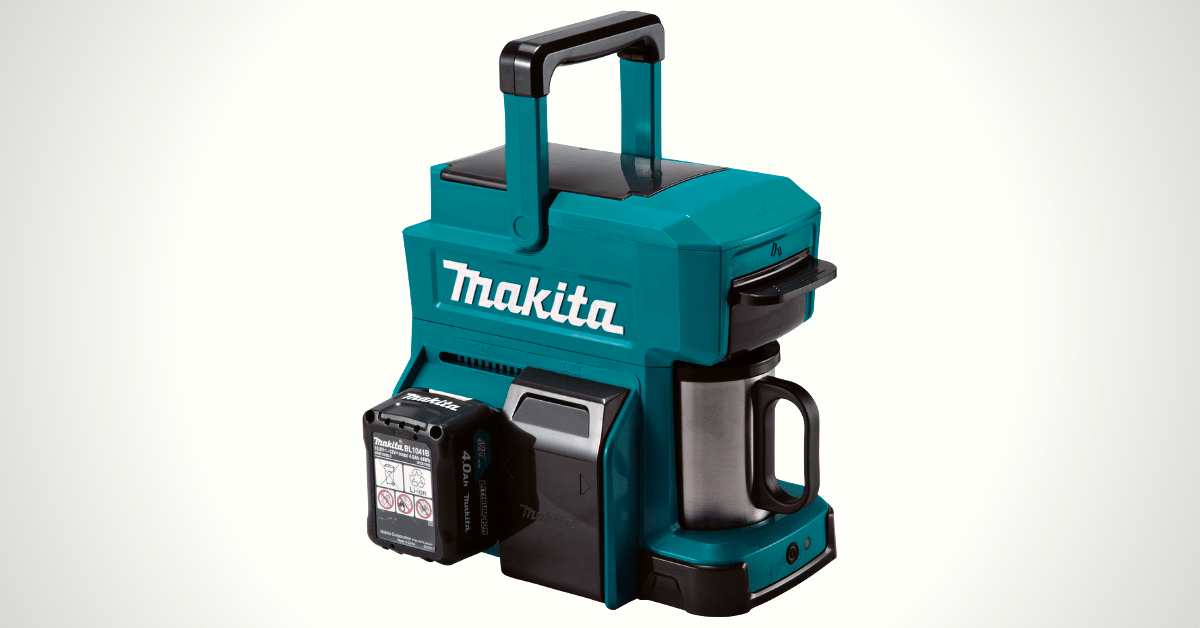Deciding on Chemex vs V60? Check out the ultimate showdown of these machines and find out which pour-over coffee maker is better for you.
There are tons of good pour-over coffee brewers out there.
But two of them are fighting for first place – Chemex and Hario V60.
Picking between is very hard, and I know that very well.
In fact, the only way I could make a decision was to do thorough research on each of their features.
Today, I’ll share my findings so that you can make an educated choice.
Let’s dive into the Chemex vs V60 rundown.
A Quick Guide to Pour-Over Coffee
It’s pretty easy to figure out what this method is by its name. Basically, you pour hot water over coffee grounds to brew coffee.
It’s a manual method, and as such, it requires a bit of patience, practice, and precision. Just like art. In fact, you could say that pour-over coffee brewing is a form of art.
For this method, you’ll need a few things aside from a pour-over coffee maker:
- Coffee filter
- Ground coffee
- Gooseneck kettle
- Coffee scale
Here’s how it works:
- Place the filter into the place, then add coffee grounds.
- Slowly pour water over the coffee grounds in a circular motion. First, pour a little, just until the grounds are covered. Let that soak up for a while, which should take no longer than 30 seconds.
- As the coffee grounds start swelling, continue pouring water slowly.
And that’s pretty much it!
Now, let’s do a quick overview of each of these pour over coffee brewers.
Chemex at a Glance
One may say that this memorable brewer is a hipster thing, but they are wrong. This model is old but hasn’t changed a bit from day 1. If that doesn’t speak of the genius design, the fact that it’s displayed at museums must.
I’m a sucker for a good-looking design, so I’m amazed by how this brewer looks. The hourglass body, the wooden handle, and the leather band – details that make it both retro and fashionable.
The hourglass shape allows coffee to drip slowly into the chamber below. Chemex uses special thick filters, which let no oil or sediment pass through. So what you get is a very clean and delicate cup of coffee.
These filters can be somewhat expensive, so that’s something to keep in mind. While you may find permanent filters on the market, they’re made by third parties. For that reason, they might not work as well.
I really like that this brewer comes in different sizes. That way, there’s a suitable Chemex for different-sized households. The smallest one makes 3, while the largest makes 10 cups at a time.
Pros
- Made of borosilicate glass, which is sturdy and doesn’t retain flavor
- Comes in many sizes, so it’s suitable for different-sized households
- Features wooden handle, allowing you to pour while coffee is still hot
- The filters prevent sediment from getting through, so you get a very clean cup of coffee
Cons
- The filters are slightly expensive, increasing the overall cost of this brewer
V60 at a Glance
Hario V60 is a well-known name in the pour over the world. It has a simple design that works wonders when it comes to brewing coffee.
The cone-shaped design allows water to run slowly through the grounds. That way, your coffee gets extracted just the right amount. Paired with a thin paper filter, this brewer makes a balanced cup of coffee with a thicker body.
What’s great about V60 is that it comes in different material options, like ceramic, plastic, and metal.
Of course, each material has its own pros and cons. Plastic and ceramic retain heat better, while metal is much more durable. Depending on your preferences, you can really find the perfect version for you.
As for the sizes, there are 3 versions available. The smallest one is suitable for a single person, while the largest one will work for a couple of coffee drinkers. If you’re looking for a brewer that makes a large batch at once, this is not it.
What I like the most about this coffee brewer is that it’s rather affordable. Of course, the material dictates the price. But even the most expensive one is still not too pricey.
Pros
- Different materials are available, giving you more options to choose from
- Thin filters allow more oil through, so you get a very flavorful cup of coffee
- Rather affordable, meaning it won’t break your bank
- Dishwasher-safe, so you don’t have to clean it manually
Cons
- Can’t make a large batch, so it’s not suitable for bigger households
Chemex vs V60 Showdown
Alright, now that we’ve briefly talked about each of these coffee makers, it’s time to compare their features, side by side.
What’s the design like?
Both of these coffee brewers have unique, memorable, and highly functional designs.
Chemex is an elegant, hourglass-shaped vessel. It’s made of borosilicate glass and features a heatproof wooden handle around the waist, as well as a rawhide band around it. The rawhide is a nice touch, but it also helps in having a strong grip when pouring.
Some of the newer models can come with a glass handle instead, but the shape is the same.
The choice of the material definitely helps with the overall aesthetics, but also with how the coffee turns out. Since glass doesn’t retain flavor, it won’t affect the flavor of your coffee in any way.
When it comes to V60, you have a couple of material options to choose from:
- Polypropylene
- Glass
- Ceramic
- Steel
- Copper
Among them, plastic is the most affordable, while metal ones are the most durable. As for heat retention, ceramic definitely leads, but the other ones aren’t far behind.
Now, this coffee brewer originally didn’t include the vessel. Instead, you place it over the mug or carafe, which will collect coffee. This means there are fewer dishes to wash!
With that being said, Hario now offers brewing kits, which include a carafe together with the brewer. So if you don’t own a carafe yet, this is a great option.
You’ve probably noticed that the V60 is shaped like a cup. But if you look closely, you’ll see where it got its name from.
The cone is angled at 60 degrees!
Pretty smart, right?
You see, that angle, combined with spiral ribs on the interior, creates the perfect flow speed. The water is poured neither too quickly nor too slowly – just right.
The ribs also ensure that the wet filter doesn’t stick to the walls of the V60. This allows air to pass through so that it maintains an even brewing temperature.
THE WINNER
Both of these coffee brewers have exceptional designs. But given that the V60 offers different material options, it takes the lead in this case.
What grind size does it use?
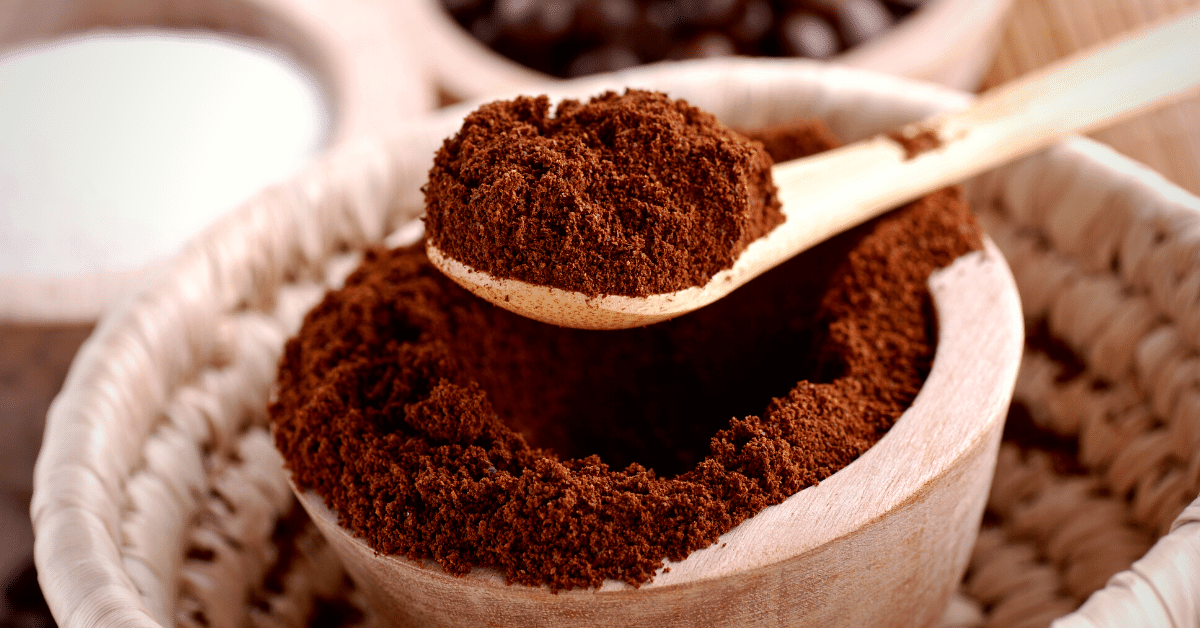
Like with any coffee brewer, the grind size is a key factor for getting a delicious cup of coffee.
And even though both are pour-overs, these two models use different grind sizes.
For Chemex, you need a medium-coarse grind. For comparison, the coffee bean should feel and look like rough sand.
Now, Chemex is actually quite forgiving when it comes to the grind size. So even if you use slightly finer or coarser grind, you can still get a decent cup of coffee.
When it comes to V60, you need medium-fine coffee grounds. Ground particles of this size are similar to table salt and feel gritty.
The grind size makes V60 less forgiving. Even the slightest over-extraction can cause your coffee to be too bitter.
THE WINNER
Chemex uses medium-coarse, while V60 uses medium-fine grind. But between the two, Chemex is slightly more forgiving.
Which types of filters do they use?
Both of these coffee brewers use paper filters, although different ones.
In fact, in both cases, you need to use special filters made by the same brand.
Chemex uses double-bonded paper filters, which are about 20-30% heavier than most paper filters.
What this does is prevent any oil or sediment from passing. This makes the brew very clean and bright.
If you don’t want to buy Chemex filters, you have a couple of alternatives. Certain brands make reusable filters designated for Chemex shape, and those made from hemp or cotton can also work.
With that being said, the coffee made with these filters might not taste exactly the same as one made with a Chemex filter.
Hario V60 filters, on the other hand, are slightly thinner than regular filters. For that reason, they make richer and better-tasting coffee.
Between the two, V60 filters are cheaper and easier to find.
There are a few products on the market that can work as V60 filter alternatives. But, they’re not exactly copycats, and they might not make as great coffee as the original ones would.
THE WINNER
As far as performance goes, both filters are great for their designated coffee brewers. But given that V60 filters are cheaper and easier to come by, Hario is a winner here.
How does brewing work?

Since pour-over is a manual method, a bit of practice and patience is always necessary.
You need to pour water slowly over the coffee grounds, ensuring they get saturated evenly.
Now, remember how Chemex uses thicker filters?
Well, that makes it a bit more forgiving when brewing. The thicker material adds more water resistance, so you can’t pour it too quickly.
For the same reason, it’s easier to mess up brewing with Hario V60. Pour too fast, and you’ll end up with an under-extracted cup of java.
THE WINNER
Chemex is a clear winner here, as it’s more flexible in pour technique.
What’s the coffee like?
Given they use different filters and grind sizes, it’s clear that these two brewers make very different cups of coffee.
Chemex coffee is very bright and clear, as there’s no sediment. This brewer really lets unique coffee flavors shine. For that reason, it’s suitable for single-origin coffee and medium roasts.
Since it uses thin filters, Hario V60 lets some coffee oils through. This makes coffee very balanced, with a bit of sweetness and punch to it.
Both light roasts and medium roasts are great for this type of brewer, and more complex notes really come through.
THE WINNER
This one is up to you, depending on whether you prefer a clean or more bodied cup of coffee.
What sizes are available?
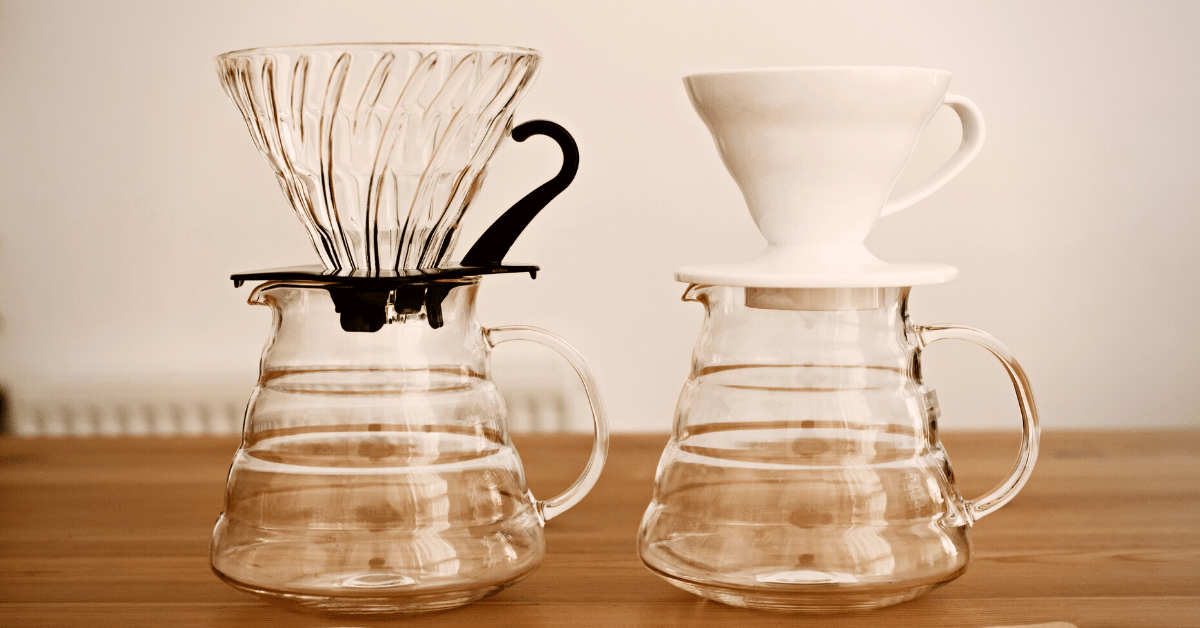
How many people you’re making coffee for?
Chemex has several options available:
- 3 cups – 15 ounces
- 6 cups – 30 ounces
- 8 cups – 40 ounces
- 10 cups – 50 ounces
Whether you’re drinking solo or with the entire household, there’s a suitable size for you.
When it comes to Hario V60, there are fewer sizes available:
- Size 01 – 1-2 cups
- Size 02 – 1-4 cups
- Size 03 – 1-6 cups
As you can see, you can’t make batches of coffee as big as you can with Chemex. But the size 03 is still pretty decent for a couple of household members.
THE WINNER
Chemex offers way more brewer sizes than Hario V60, so it’s a clear winner.
Which one is easier to use?
There’s little difference when it comes to how easy to use these brewers are.
In both cases, you need to pour water slowly over the coffee grounds in circular motions. Luckily, that’s easily done with a gooseneck kettle.
However, given that the Hario V60 is slightly smaller, you need to be slightly more precise when pouring water. Furthermore, the thin filter also requires slower pouring for proper extraction.
Chemex, on the other hand, will be more forgiving if you’re pouring too hard.
THE WINNER
In this case, Chemex has a slight edge when it comes to ease of use.
What’s the maintenance like?
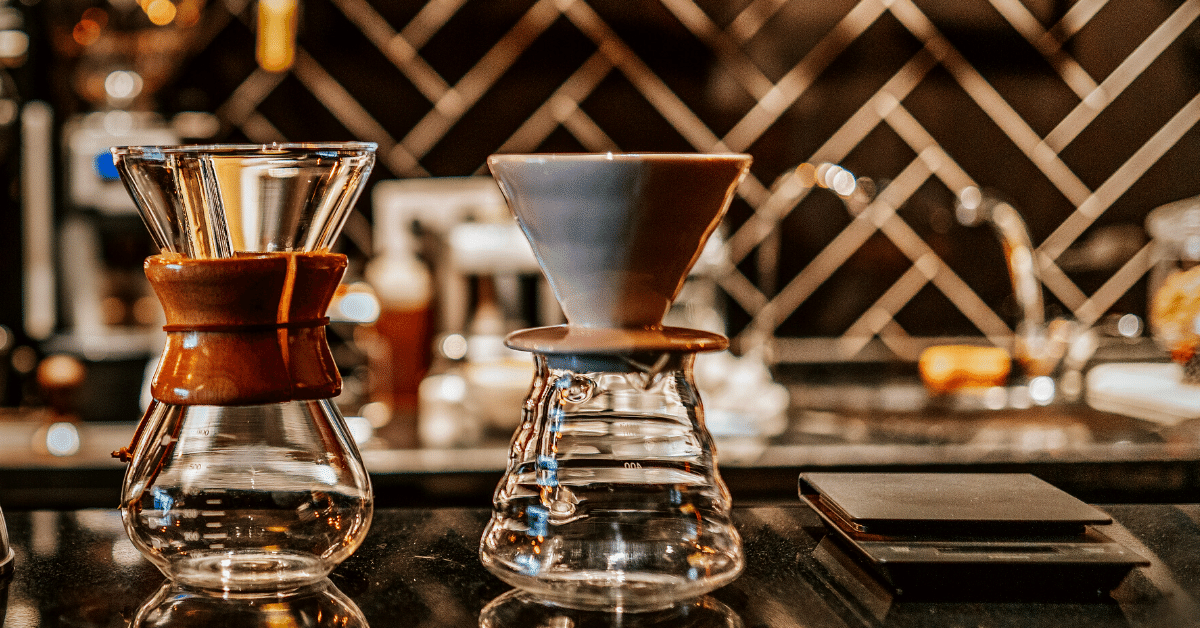
Let’s be real – no one likes to spend too much time cleaning up after brewing.
Luckily, both of these brewers are rather easy to clean.
Chemex, due to its hourglass shape, is a bit difficult to scrub. However, it’s dishwasher-safe, so you can avoid doing it manually if you want.
With that being said, cleaning by hand definitely prolongs the life of the brewer.
In any case, remember to remove the wooden and leather parts, as they aren’t designated to get wet.
As you already know, Hario can be made of different materials. But luckily, all of them are marked as dishwasher-safe, so you don’t have to put much effort into cleaning.
THE WINNER
Even though both brewers are fairly easy to clean, Hario V60 has a slight edge because its shape makes it more reachable for scrubbing compared to the hourglass shape of Chemex.
Which one is cheaper?
Nothing less important is the price of each brewer.
Generally, Chemex is the more expensive of the two. And the same goes for the filter it uses. So, in reality, the overall cost of owning a Chemex is way bigger than Hario V60.
Plus, Hario offers several material options. Plastic is, obviously, the least expensive one. Copper, on the other hand, can be quite pricy. But you have options depending on your budget.
THE WINNER
Hario V60 has several options to choose from, depending on how much money you’re willing to spend. And compared to Chemex, all of them are more affordable.
Final Verdict
There you have it, a rundown of each feature of these two coffee brewers.
You should get Chemex if:
- You want to make a large batch of coffee at once
- You prefer a more bright and cleaner cup of coffee
- You want a more forgiving brewer
You should get Hario V60 if:
- You brew a small amount of coffee at a time
- You want a strong-bodied cup
- You don’t want to spend a lot on a pour-over brewer
But rest assured that you can’t go wrong with either one. Both of these coffee brewers make insanely good java.
Need recommendations on the best coffee for pour-over? Check out our article with the best options on the market.

